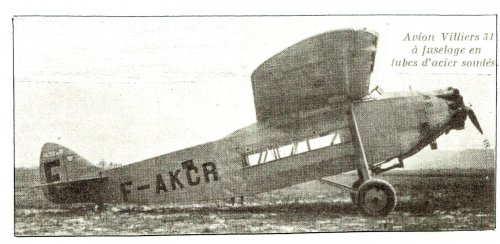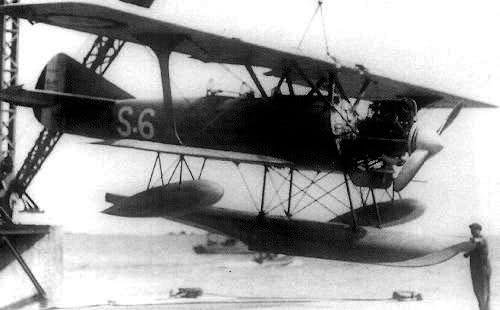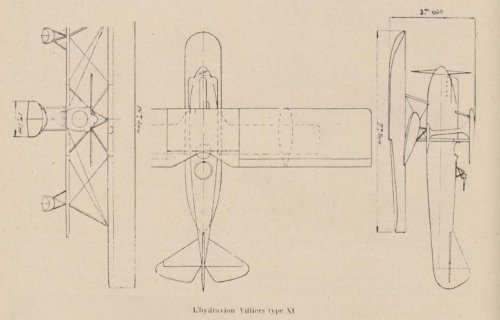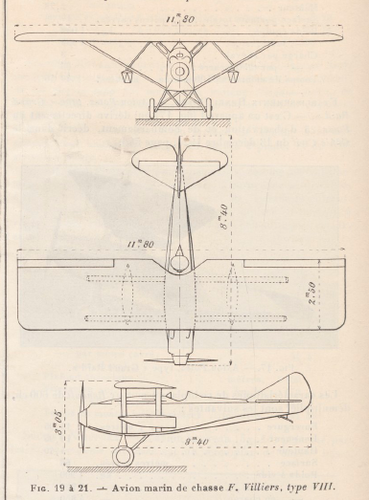You are using an out of date browser. It may not display this or other websites correctly.
You should upgrade or use an alternative browser.
You should upgrade or use an alternative browser.
Villiers Projects and Prototypes
- Thread starter hesham
- Start date
- Joined
- 26 May 2006
- Messages
- 33,477
- Reaction score
- 13,523
Hi,
in a French competition of 1926 for observation and recce catapult launched
seaplane,the main tenders were; Latham-230,Besson MB-35,Levy-Biche LB.4
Gourdou-Leseurre L2,Romano R.4,FBA 17HL-1 and Villiers Type-11.
Does anyone know more about this aircraft project ?.
in a French competition of 1926 for observation and recce catapult launched
seaplane,the main tenders were; Latham-230,Besson MB-35,Levy-Biche LB.4
Gourdou-Leseurre L2,Romano R.4,FBA 17HL-1 and Villiers Type-11.
Does anyone know more about this aircraft project ?.
- Joined
- 26 May 2006
- Messages
- 33,477
- Reaction score
- 13,523
My dear Toura,
in Hydroretro site that article;
in Hydroretro site that article;
Hydravion Villiers 26 (1929).
François Denhaut est engagé en 1928 par
François Villiers pour diriger la fabrications de
ses hydravions à Meudon. Il est âgé alors de
50 ans, mais il a gardé une grande créativité.
A partir de 1928, Denhaut participe à l’étude
des quatre prototypes Villiers 23, 26, 26 bis et
320. Les hydravions Villiers sont d’une grande
qualité, mais le constructeur n’a pas les reins
très solides et il doit bientôt se résigner à fermer ses ateliers. Lors de la fermeture de la
firme Villiers en septembre 1931, Denhaut se
retrouve de nouveau en situation de recherche d’emploi. En 1932, il étudie sous l’égide
du directeur général technique au ministère
de l’Air, un certain Albert Caquot, un projet
d’hydravion trimoteur de torpillage et
d’exploration loitaine. Caquot est appelé à de
grands desseins, tandis que Denhaut, ne disposant pas de fortune personnelle et n’étant
soutenu par aucun organisme financier, dé-
cide d’abandonner définitivement la construction aéronautique qu’il a si bien servie
pendant vingt ans. Quant à Jérôme Donnet, il
cesse toute production aéronautique pour
construire des automobiles. Les usines de l’île
de la Jatte à Levallois-Perret dont il était resté
propriétaire sont vendues en juin 1930 à René
Couzinet dont les ateliers de Meudon ont
brûlé, et qui prépare un engin révolutionnaire
pour la traversée de l’Atlantique.
- Joined
- 25 June 2009
- Messages
- 14,107
- Reaction score
- 4,239
Topics merged.
I don't see the point of creating separate topics for obscure 1920s types, then posting completely different types in these topics!
Let's have one single Villiers topic for now, and we'll split if there's reason to...
Meanwhile, two pics of the Villiers 310 and Villiers 31:
I don't see the point of creating separate topics for obscure 1920s types, then posting completely different types in these topics!
Let's have one single Villiers topic for now, and we'll split if there's reason to...
Meanwhile, two pics of the Villiers 310 and Villiers 31:
Attachments
- Joined
- 26 May 2006
- Messages
- 33,477
- Reaction score
- 13,523
Hi,
Villiers Vil.5 two seat biplane to meet an 1926 (Aviation Militaire CN.2) requirement,for two seat
night fighter,powered by one 450 hp Lorraine-Dietrich12 Eb water-cooled 12-cylinder engine.
Villiers Vil.8 single seat parasol wing monoplane for 1926 competition,for AMC.1,a single
seat shipboard fighter,powered by one 300 ho Hispano-Suiza 8Fb engine.
Villiers Vil.9 was two seat recce float seaplane,it had a single main float with twin
stabilizing floats,developed from Vil.4.
Villiers Vil.10 was also two seat recce float plane,with two main floats,developed
from Vil.4.
Villiers Vil.5 two seat biplane to meet an 1926 (Aviation Militaire CN.2) requirement,for two seat
night fighter,powered by one 450 hp Lorraine-Dietrich12 Eb water-cooled 12-cylinder engine.
Villiers Vil.8 single seat parasol wing monoplane for 1926 competition,for AMC.1,a single
seat shipboard fighter,powered by one 300 ho Hispano-Suiza 8Fb engine.
Villiers Vil.9 was two seat recce float seaplane,it had a single main float with twin
stabilizing floats,developed from Vil.4.
Villiers Vil.10 was also two seat recce float plane,with two main floats,developed
from Vil.4.
- Joined
- 26 May 2006
- Messages
- 33,477
- Reaction score
- 13,523
hesham said:Hi,
Villiers Vil.11 was a observation and recce catapult launched seaplane,it was
a single float version of Vil.4.
Hi,
the Villiers Vil.11 was a single seat observation and recce catapult launched seaplane
version of Vil.8 (not Vil.4),powered by one 450 ho Lorraine 12 Eb engine.
- Joined
- 26 May 2006
- Messages
- 33,477
- Reaction score
- 13,523
Hi,
Vil.23 was a twin engined seaplane prototype,powered by two Gnome-
Rhone Jupiter engines,mounted in tandem.
Vil.320 was a twin engined amphibian seaplane prototype,intended for
1930 competition for postal seaplane.
Vil.23 was a twin engined seaplane prototype,powered by two Gnome-
Rhone Jupiter engines,mounted in tandem.
Vil.320 was a twin engined amphibian seaplane prototype,intended for
1930 competition for postal seaplane.
- Joined
- 26 May 2006
- Messages
- 33,477
- Reaction score
- 13,523
hesham said:Hi,
in a French competition of 1926 for observation and recce catapult launched
seaplane,the main tenders were; Latham-230,Besson MB-35,Levy-Biche LB.4
Gourdou-Leseurre L2,Romano R.4,FBA 17HL-1 and Villiers Type-11.
Does anyone know more about this aircraft project ?.
Hi,
I heard that,the LeO H-13 was also involved,but with some modifications,who
can confirm on this ?.
- Joined
- 26 May 2006
- Messages
- 33,477
- Reaction score
- 13,523
Attachments
- Joined
- 26 May 2006
- Messages
- 33,477
- Reaction score
- 13,523
hesham said:the Villiers Vil.11 was a single seat observation and recce catapult launched seaplane
version of Vil.8 (not Vil.4),powered by one 450 ho Lorraine 12 Eb engine.
Here is a 3-view to Villiers Vil.11 from L'Aerophile 1927.
Attachments
Hello,
does someone maybe more info on the Villiers 31 and/or 310? It seems to be very little written about, also in the period literature of the 30's... Especially a 3 view would be interesting or more detailed dimensional info; basically anything Was there ever anything in another french magazine? Aviation Magazine?
Was there ever anything in another french magazine? Aviation Magazine?
http://gallica.bnf.fr/ark:/12148/bpt6k65676432/f70.image
http://gallica.bnf.fr/ark:/12148/bpt6k65676432/f71.image
Many thanks in advance!
does someone maybe more info on the Villiers 31 and/or 310? It seems to be very little written about, also in the period literature of the 30's... Especially a 3 view would be interesting or more detailed dimensional info; basically anything
http://gallica.bnf.fr/ark:/12148/bpt6k65676432/f70.image
http://gallica.bnf.fr/ark:/12148/bpt6k65676432/f71.image
Many thanks in advance!
Many thanks Hesham, I appreciate it! 
I am trying to differentiate between the Villiers 310 and 31; not sure what the difference was (or if there was a difference even?) It seems the plane F-AKCR (cn. 1) was atleast registered as a 310. F-AKEI is not in the registers I have seen online atleast... So could be 31 or 310. It is a bit different atleast in having different engine cowling. The rest seems similar. Most pictures of this plane are quite bad quality unfortunately...
I am trying to differentiate between the Villiers 310 and 31; not sure what the difference was (or if there was a difference even?) It seems the plane F-AKCR (cn. 1) was atleast registered as a 310. F-AKEI is not in the registers I have seen online atleast... So could be 31 or 310. It is a bit different atleast in having different engine cowling. The rest seems similar. Most pictures of this plane are quite bad quality unfortunately...
- Joined
- 26 May 2006
- Messages
- 33,477
- Reaction score
- 13,523
- Joined
- 26 May 2006
- Messages
- 33,477
- Reaction score
- 13,523
Hi,
in Onera archive,they spoke about Villier Vil.330 a seaplane or flying boat Project of 1931.
 docplayer.fr
docplayer.fr
in Onera archive,they spoke about Villier Vil.330 a seaplane or flying boat Project of 1931.
ProtectedPool ➤ Most Powerful and Safest Web3 Smart DeFi Wallet
ProtectedPool ➤ Web3 Smart DeFi Wallet . Your New DeFi Experience:: Secure, Smart, Simple. Double Approvals. Add extra confirmation of any transaction with 2FA solutions including Google Authenticator or hardware security keys. Self-custodial Solutions. Protected Pool is built on smart...
Hi HeshamHi,
Villiers V.23 and V.320: float seaplanes.
We have already exchanged in the past on the Bleriot projects during the Great War, those little known from the period 1914-1915. But I lost my login (Flamel) and I had to create another one.
Today I am looking for information on Villiers seaplanes and more specifically those created from 1928 by François Denhaut hired by François Villiers (therefore not the II; IV, IX, X, XI models designed by Jean Biche).
I saw that you had written an old post with the numbers 23 and 320.... Can you explain your references concerning these seaplanes?
My opinion is that Denhaut would have worked on 4 seaplane projects for Les ateliers d'Aviation F. Villiers: the 26 is the best known because it was completely built and tested there, but the others (23? 32 ? 330?) would not have gone beyond a study or perhaps the construction of a model.
thanks in advance
Regards
Flamel
- Joined
- 26 May 2006
- Messages
- 33,477
- Reaction score
- 13,523
Hi,
>> in Onera archive,they spoke about Villier Vil.330 a seaplane or flying boat Project of 1931.
I am going to consult this archive collection soon and maybe I will have more information on this hypothetical Villiers 330 ???
The problem with the Villiers seaplanes is that they do not seem to belong to a particular french navy program. At the end of the 1920s, the prototype market in France allowed a manufacturer to offer what he wanted to offer
>> in Onera archive,they spoke about Villier Vil.330 a seaplane or flying boat Project of 1931.
I am going to consult this archive collection soon and maybe I will have more information on this hypothetical Villiers 330 ???
The problem with the Villiers seaplanes is that they do not seem to belong to a particular french navy program. At the end of the 1920s, the prototype market in France allowed a manufacturer to offer what he wanted to offer
- Joined
- 11 March 2012
- Messages
- 3,115
- Reaction score
- 2,942
Like the World War 1 vintage Nieuport 17, that lower wing probably provides little lift. Its primary function seems to be structural, by providing a convenient place to mount struts and bracing wires.HI ALL
From"Aviation Magazine" march 15 1988
The purpose of Villiers XXIV was to test leading edge slats. It was a French army night fighter. a prototype for testing by the military. No order after.Like the World War 1 vintage Nieuport 17, that lower wing probably provides little lift. Its primary function seems to be structural, by providing a convenient place to mount struts and bracing wires.HI ALL
From"Aviation Magazine" march 15 1988
Very Interesting. I thought that the 320 project was with the principle of a flying boat. Because at that time Denhaut was in charge of seaplane projects at Villiers. What is the source? I don't remember seeing it in the ONERA documents. Thanks
- Joined
- 15 February 2024
- Messages
- 344
- Reaction score
- 964
You are right, I forgot to precise that this plan comes from my own collection. I have got some original documents from Villiers, including few plans, such as this one showing another wind tunnel model of Villiers 330.Very Interesting. I thought that the 320 project was with the principle of a flying boat. Because at that time Denhaut was in charge of seaplane projects at Villiers. What is the source? I don't remember seeing it in the ONERA documents. Thanks
Attachments
- Joined
- 15 February 2024
- Messages
- 344
- Reaction score
- 964
3-view of Villiers 310 tunnel model from my collection.Nice new information on the Villiers types! IS there by any chance more information on the 31 and 310? Maybe more images or a 3 view / drawing?
Regards,
R.
Attachments
- Joined
- 3 September 2006
- Messages
- 1,429
- Reaction score
- 1,348
I suspect that the journo misinterpreted the military designation "Villiers Vil <number>".From L'Air 1926,
I want some help here,they called it Villiers Type-VII IIA,and I don't know if they meant Type-IIA
later became Type-VII or not ?.
There was a "Villiers Vil 11A" catapult-launched floatplane.
But it is more likely that he wrote 2A as IIA using Roman numbers: Indeed, the Marine adopted a type Villiers Vil-2 AMC2 (Avion Marin de Chasse Biplace / Naval two-seat fighter) sesquiplan for the Béarn around 1925. Note that your 2nd pic's title precisely says "Avion Marin de Chasse".
(I am always sceptical when people use a journal as a serious source for designations or anything technical. IME they are rather consistently near the lowest quality in terms of technical accuracy. It is unavoidable since they are usually not tech educated and have to write about just about anything and pretend to know the subject. Ofc in >90% of cases they don't.)
Nice! Many thanks for this, so great to see a rare document like that. Indeed a drawing of the wind tunnel model with the associate dimensions of the model. Hard to say ofcourse how close this was to the definitive 31 / 310 plane, but gives a good baseline!3-view of Villiers 310 tunnel model from my collection.
Similar threads
-
-
-
-
LFG (Luft-Fahrzeug-Gesellschaft) Projects
- Started by hesham
- Replies: 21
-





















